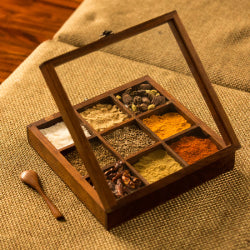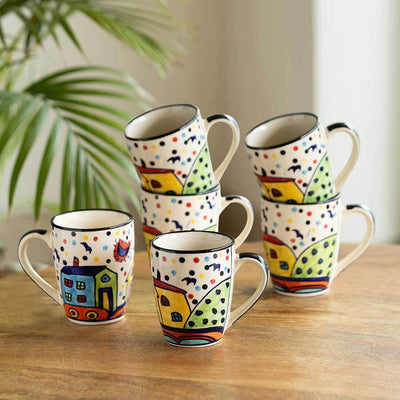The Role Of Animals And Birds In Indian Art, History & Culture
The Depiction of Animals & Birds in Indian Arts
Art portrayal and content encompass a wide range of topics. Art can be found in both the commonplace, divine, and unique acts of life, from human emotions, festivals, and situations to tales and stories. The depictions of nature and fauna, on the other hand, define Indian art. Wildlife has always had a prominent role in Indian art, whether it is in the form of sculptures, paintings, or even buildings.
Animals and birds, of course, are a part of our world, and their existence, like ours, is a seamless integration of the physical earth's dynamics. We notice and are frequently attracted by wildlife around us, and animals and birds have long piqued human attention and creativity. Since the dawn of time, people's fascination with animals and birds has reflected itself in artistic forms. Wildlife is also a crucial and integral element of human life because of its utility and engagement in daily routines and duties. Since the Indus Valley Civilization, there has been evidence of representing animals and birds in artistic circles. Stone figurines, paintings, amulets, engravings, and other items have all featured animal motifs.
The Importance of Animals in Ancient Indian Art

In Indian art, bird and animal images have been used in two separate contexts. The birds and animals in Fine Arts, such as painting, architecture, Indian handicrafts and sculpture, have deeper connotations. The heavenly creatures, for example, are the sculptures of birds and animals carved on the high spires of Hindu temples, which depict the lofty peaks of the sacred mountain, Kailash. They are divinely endowed mounts that belong to Hindu gods and goddesses. When used in decorative arts, the same birds and animals reflect the worldwide environment. They are entirely aesthetic in nature, with no preconceived meaning.
India is a land of immense mountains, plains, tropical forests, rivers, seas, and deserts, among other things, so it's no surprise that nature has left a lasting influence on its people. And this is exemplified in art, literature, and thought. Animals were featured in art, and animal materials were used to make jewellery and clothes. Animals have traditionally been represented in innovative ways by Indian painters. Animals are sometimes depicted as companions, sometimes through heroic acts, and sometimes through their good deeds motivating people. When it comes to describing the process of creation, Indian philosophy is highly scientific.
The symbolism of animals is extremely important in Hindu, Jain, and Buddhist mythology. Lord Vishnu's initial incarnations include a fish, tortoise, hog, and half-human, half-lion. Almost every deity is accompanied by an animal or bird, which is represented on their idols or in temples. As a result, the value of animals and birds transcends their natural existence into the domain of the spiritual. Almost every temple in India combines animals and birds in its designs and aesthetics. Buddhist animals like the horse, peacock, and elephant reflect the various characteristics required to achieve nirvana. Jains are strong believers in the importance of nature and animals in human peace, and this view is reflected in their architecture and arts. Animals are also revered in this country, therefore their importance in spiritual arts and Indian and tribal art forms is undeniable.
How Animals in Indian Culture create an `Inclusive Universe`
Generations in India have viewed all animals as friends and partners with whom they share the environment over millennia.
The churning of the cosmic ocean by the gods on one side and demons on the other is one of India's most fundamental creation tales. Many sculptures and paintings depicting this event suggest that they utilised a massive snake named Anant - the cosmic serpent that entwines the entire planet – to hold it all together. During the churning, the cosmic ocean produced a divine elephant (Airawat), horse (Uchaisravas), and cow (Kapila). All of these achieved the status of divine deity companions and were thus regarded as important parts of both the human and spiritual worlds.
Especially in the Puranic period, each deity represented one or more elements of divinity, and as a result, each deity was accompanied by one or more animals to 'complete' the linking of gods, humans, and animals. The Vahanas, or vehicles of gods and goddesses, developed to signify their virtues or as a way of instantly recognising the deity, which could be displayed in many stances, shapes, or aspects, over time. Any goddess accompanied by a tiger or lion, for example, is readily recognised as Durga. Most importantly, they demonstrated that animals, birds, and marine creatures were regarded as equal partners who shared the earth with humans.

The Hidden Symbolism of Birds in Indian Art Painting
Among all genres of art, Indian wildlife art has received widespread acclaim and appreciation around the world. Without a doubt, some of the most well-known artists who have painted or shot animals have become famous for their ability and technique in depicting various types of birds and mammals in the wild. Throughout Indian art history, birds of various sorts have been prominently portrayed in paintings. Symbolic metaphors were essential in spiritually enlightening the masses in a civilisation with limited literacy. Some of the earliest known depictions of imaginative invention, such as cave paintings and rock art, contain animal and bird art.
Peacock: A painting of a peacock typically represents spring, new growth, long life, and love. It's a wonderful sign, indicating that your relationships and work will flourish. You can hang one of these paintings on your walls. Simply browse an internet art gallery and purchase an Indian art wildlife painting.

White Peacock: A painting of a white peacock is a beautiful sign of benevolence, peace, kindness, compassion, and good luck.
Sparrow: Generally, in paintings, a sparrow is depicted sitting near a window, perched on a ridge, flying outside a window, or perched on a tree limb, all of which represent optimism, fertility, and rebirth.

White Dove: A painting of a white dove represents the holy trinity's third person, as well as serenity and innocence.
Pigeon: Pigeon paintings represent love, marital pleasure, and cheerfulness in the house; this bird may represent some type of good kismet to come.
Duck: A white duck represents spiritual piety and purity of mind.

Phoenix: The Phoenix is a symbol of rebirth and eternal life.
Throughout Indian history, various animals have served as emblems for various rulers and emperors. Several Indian festivals are dedicated to animal welfare. Animals have been created heroes in mythology and traditional literature, possibly to instil a love for animals in everyone. Animal motifs were also promoted by powerful rulers to be used in art like and architecture at their courts.






Really informative & interesting blog about Indian art and culture.
Very interesting content, thanks for the information.
Leave a comment